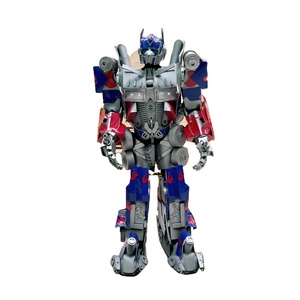
All categories
Featured selections
Trade Assurance
Buyer Central
Help Center
Get the app
Become a supplier








 Sẵn sàng vận chuyển
Sẵn sàng vận chuyển






Chất lượng hàng đầu trang phục linh vật trẻ em, giống như chất lượng trên Alibaba.com, đảm bảo mọi người trông đẹp nhất. Dù là kiểu lăn đơn giản hay phiên bản chạy điện, đều có vô số sự lựa chọn. Lượng hàng lớn cho phép những người bán buôn hoặc bán lẻ kén chọn tìm thấy trang phục linh vật trẻ em phù hợp với nhu cầu của họ. Với nhiều lựa chọn và giá cả hàng loạt, cuối cùng thì mọi người đều thắng.
Việc có trang phục linh vật trẻ em nhỏ gọn, tiện dụng luôn rất hữu ích. Bộ sưu tập tại Alibaba.com bao gồm kiểu con lăn dính cơ bản, con lăn nỉ rời và thậm chí là phiên bản hạng nặng. Cuối cùng, chúng được thiết kế đẹp mắt để giúp giữ nếp tóc và xơ vải ra khỏi quần áo. Một số thậm chí còn đủ nhỏ để nhét trong ví hoặc túi nhỏ. Điều này là hoàn hảo cho những lần liên lạc vào phút cuối.
Đôi khi cần một cái gì đó quan trọng hơn một chút. Có trang phục linh vật trẻ em điện cho cảm giác chạm chính xác và chuyên nghiệp hơn. Chúng có thể có dây hoặc kiểu có thể sạc lại được, rất phù hợp để đi du lịch. Đầu được thiết kế đặc biệt loại bỏ lông thú cưng không mong muốn và giúp loại bỏ vón cục trên áo len. Tất cả những thiết kế này cũng có sẵn để mua với số lượng lớn.
Việc lông thú cưng hoặc xơ vải bám vào quần áo sẫm màu khá là xấu hổ. Tuy nhiên, Alibaba.com có giải pháp. Có sẵn các tùy chọn đáng kể để tìm các tùy chọn trang phục linh vật trẻ em hoàn hảo. Cho dù đó là phiên bản bỏ túi nhỏ hay kiểu điện tử sang trọng, có rất nhiều lựa chọn để bạn lựa chọn. Hãy đến để tìm đúng kiểu dáng, số lượng phù hợp với mức giá phù hợp.